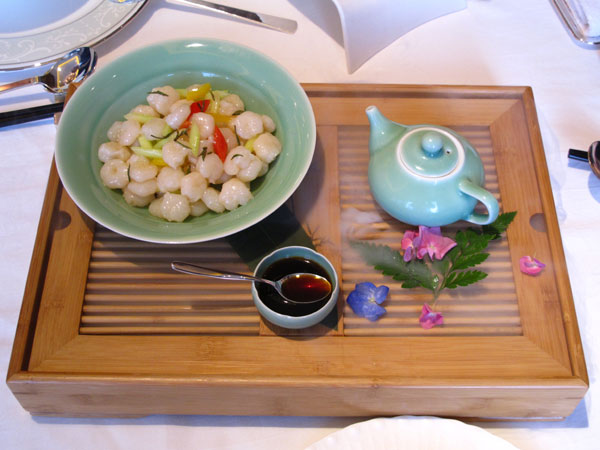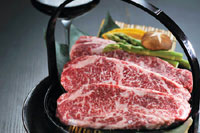Year on a Plate
|
 |
|
Lighter regional cuisines like the Huaiyang style made their presence felt in 2012. Ye Jun / China Daily |
Over the years, regional food styles, such as Xinjiang, Yunnan, and Hunan, have been gaining popularity.
A new kid on the block is Xi'an, which is known for its street food such as spicy and sour tasting cold noodles, and soaked cake with lamb soup. But Reallove, a local chain restaurant that opened its first restaurant in Beijing in April, has elevated it into a high-end treat. Interestingly, many of the dishes on the menu have a historical story linked to it.
With continuous food safety issues and environmental concerns, some hotels and even airlines have banned the use of shark fin and abalone.
Some Chinese restaurant have replaced them with other expensive money-makers - dried fish maw, sea cucumber, and high quality beef.
New ingredients also emerged.
 |
Black garlic, for example, has been used in some dishes at Qi Chinese Restaurant at The Ritz-Carlton Beijing Financial Street. The garlic is shiny, coal-black, and tastes soft and sweet like preserved plum. It is said to be an antioxidant, and have anti-acidification effect.
The restaurant has also used North American wild rice, containing rice protein and high fiber, without cholesterol or fat.
Fairly recently, Hong Kong or Macao style hot pot restaurants appear to have become Beijingers' favorite choice on cold winter days.
These restaurants typically offer fresh meat, a wide variety of seafood, and tasty base soups. Some of the best are Guanyejie Macao Hot Pot, and Faigo Hot Pot Restaurant.
The year saw some world-class restaurants opening in the capital city namely Nobu, and Morton The Steak House from Chicago.
The first Four Seasons Hotel also opened in Beijing, with an Italian and a Chinese restaurant adding to gourmet's choices in Beijing.
It has been a truly bountiful year and we look forward to more culinary surprises in the coming year.
Contact the writers at yejun@chinadaily.com.cn, fanzhen@chinadaily.com.cn
















